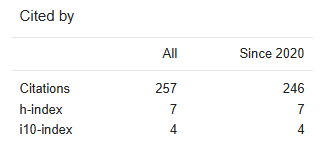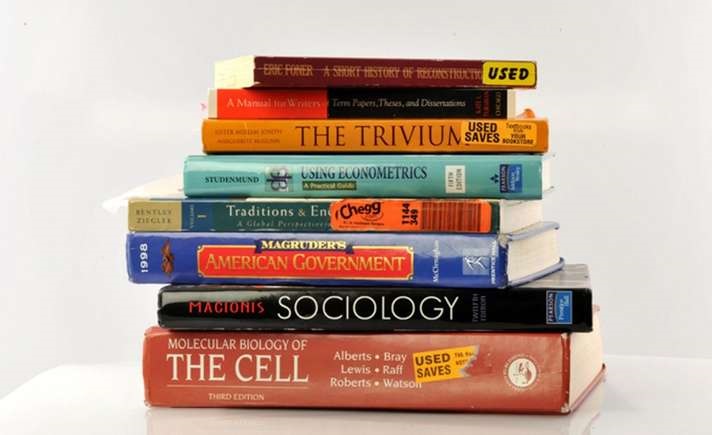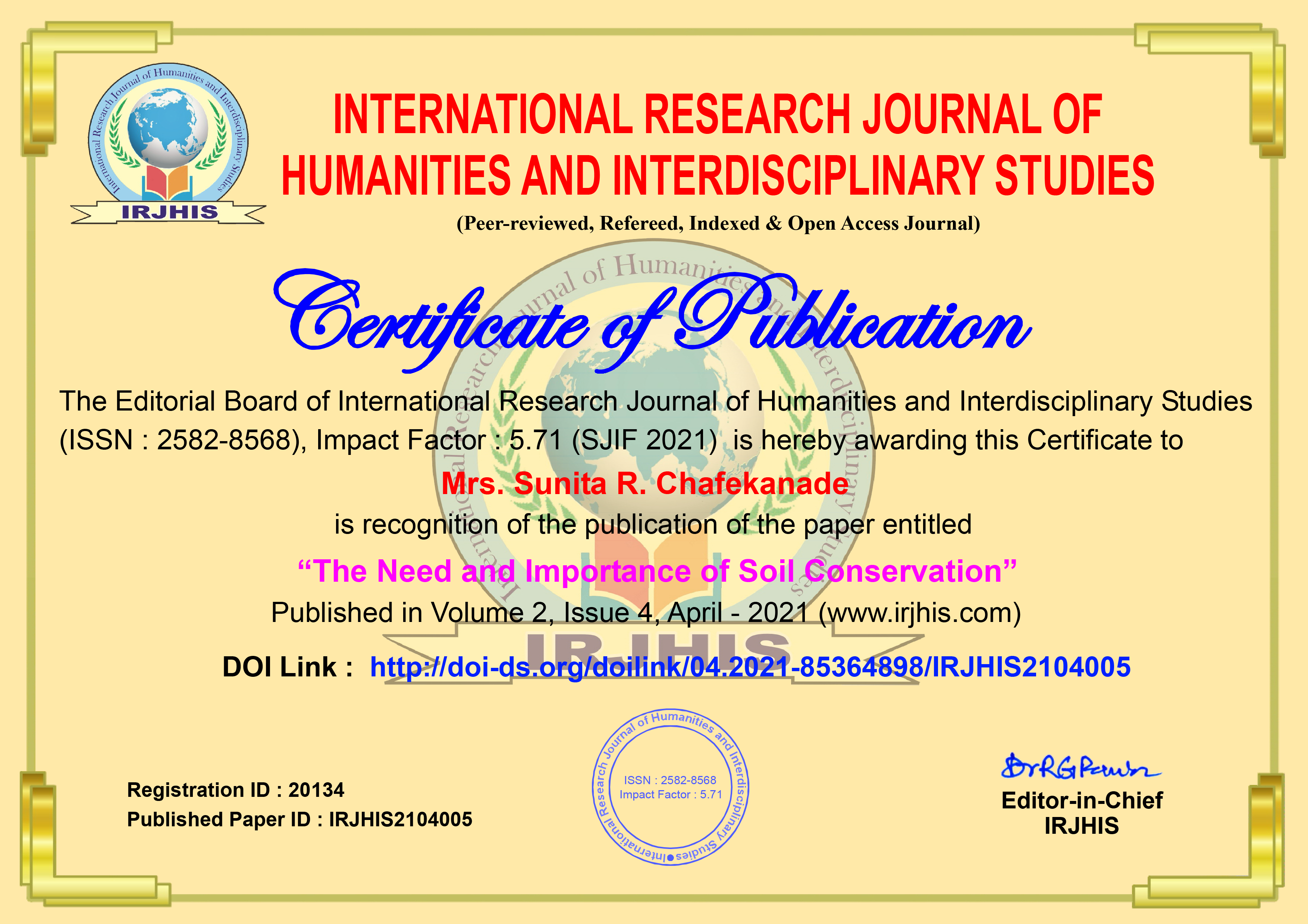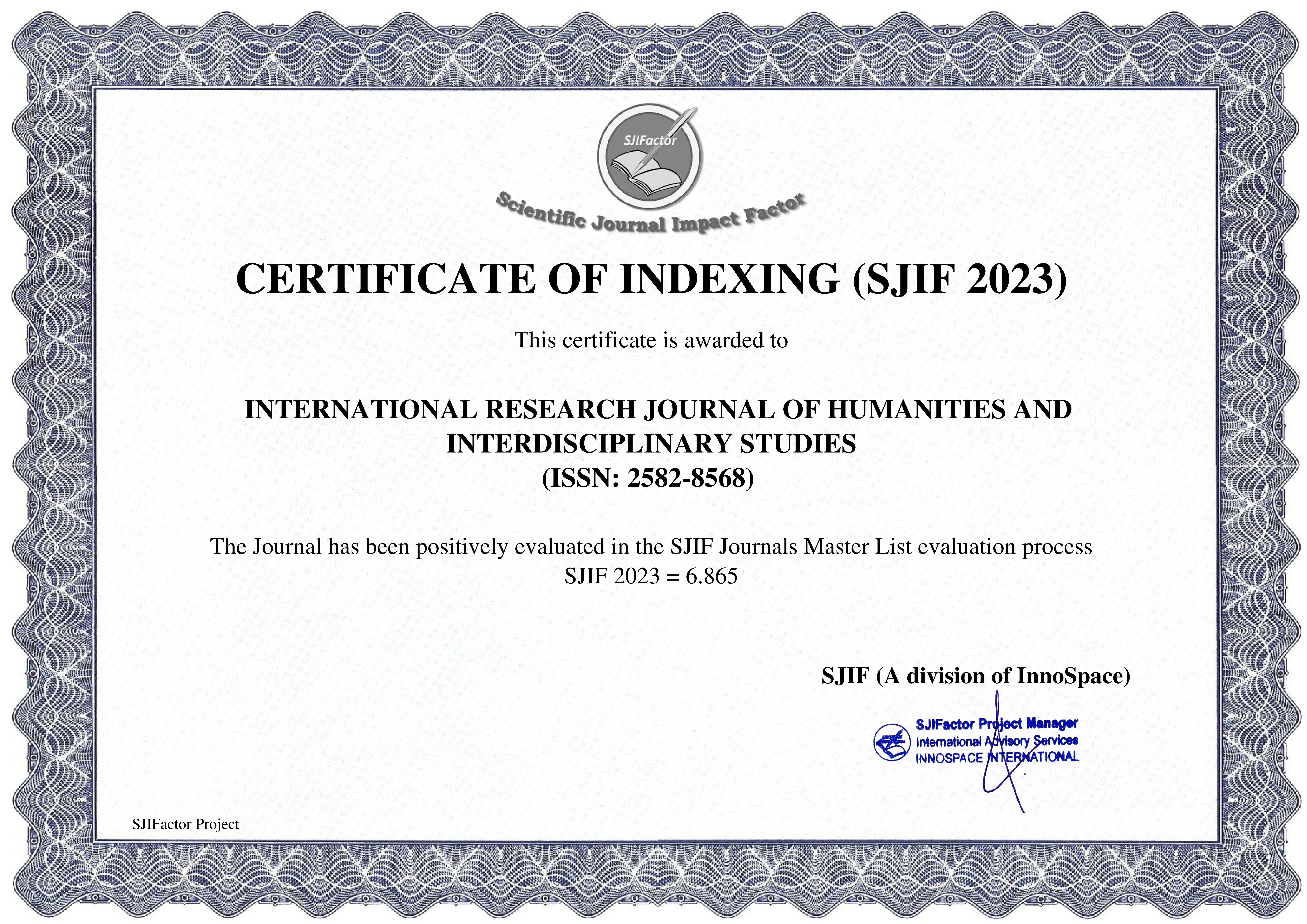Paper Details


Call For Papers
Volume 06, Issue 11
Frequency: 12 Issue per year
Paper Submission: Throughout the Month
Acceptance Notification: Within 2 days
Areas Covered: Multidisciplinary
Accepted Language: Multiple Languages
Journal Type: Online (e-Journal)
Announcement

Publish books with ISBN Number
- Edited Book
- Text Book
- Ph.D Thesis
- Conference Proceedings
ISSN Number:
2582-8568
Journal DOI No:
03.2021-11278686
Title:
Mapping the Sacred: Devi Temples and the Landscape of Mother Goddess Worship in Hooghly-Chinsura
Authors:
Cite this Article:
,
Mapping the Sacred: Devi Temples and the Landscape of Mother Goddess Worship in Hooghly-Chinsura, International Research Journal of Humanities and Interdisciplinary Studies (www.irjhis.com), ISSN : 2582-8568, Volume: 6, Issue: 7, Year: July 2025, Page No : 181-186,
Available at : http://irjhis.com/paper/IRJHIS2507019.pdf
Abstract:
Chinsurah is one of the oldest metropolises in Bengal and West Bengal. The holy Ganges River flows through this megacity. In the 15th and 16th centuries, a European trading group, the Dutch, captured the megacity and established a colony. Once upon a time, this region, like other regions of pastoral Bengal, was based on pastoral contemplation generalities and religious ideas, but despite colorful changes over time, the core contemplation conception has not changed. This exploration paper has revealed the religious study of that major megacity, especially the image of the deification of the mama goddess. It has stressed how the issue of the mother goddess deification has surfaced in the religious studies and deification of the indigenous people. Grounded on fieldwork, oral accounts, and archival exploration, the study explores the literal development of these sacred locales and analyzes how major periodic carnivals similar as Durga Puja, Kali Puja, and Jagaddhatri Puja — temporarily reshape megacity spaces into lively capitals of participated religious practice. The study also foregrounds the vital part of women in sustaining these rituals, revealing the deeply unsexed confines of Shakti deification. In pressing both enduring traditions and contemporary shifts — amid civic growth and evolving patronage this exploration underscores how the Devi tabernacles of Hooghly- Chinsura continue to anchor original identity, memory, and social cohesion. Eventually, it argues that to understand the artistic heart of this region, one must explore these living sacred spaces where history, faith, and community intertwine.
Keywords:
Mother Goddess worship, Devi temples, Hooghly-Chinsura, Shakti cult, sacred landscape, Bengal religious traditions, Durga Puja, Kali Puja, Jagaddhatri Puja, gender and devotion, ritual practices, spatial mapping, local identity, historical patronage, ethnographic study, urban transformation.
Publication Details:
Published Paper ID: IRJHIS2507019
Registration ID: 22003
Published In: Volume: 6, Issue: 7, Year: July 2025
Page No: 181-186
ISSN Number: 2582-8568
Download Full Paper: Click Here
Article Preview:





